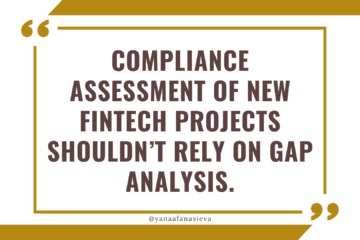Unfinished FinTech Projects and Abandoned Ideas are Caused By the CEO and are Not the Results of Team Creativity
Today, I’d like to share with you my thoughts on unfinished projects and abandoned ideas and how this causes inefficiencies and wasted resources within FinTech.
Most startups believe that the reason why they have so many unfinished projects and abandoned ideas is that the team is so very creative and enthusiastic and there is just not enough time or people to finish all of that. But there will be one day when these things will definitely get done. It feels good to tell yourself this story, however, this is actually a huge lie and it does cost you money even if you do nothing about the project.
The most common scenario when projects get abandoned occurs when the team realizes that they don’t have the person to drive this idea forward or don’t have other resources to consistently pursue it.
The problem with believing that the lack of resources is the true reason for not moving forward is that it triggers a lot of unintended consequences.
Here are the domino effects of delayed or unattended projects:
- You begin to associate things not being done with the lack of resources or time and do not address inefficiencies, poor performance, or poor decisions.
- As soon as you get the new funding in, startup companies start hiring like crazy for all the roles that were on hold, without actually questioning their actual needs. Moreover, what often happens is you start hiring for the future person that is supposed to be dedicated to one particular area or a project and will have a specific knowhow, but by the time you actually hire someone, they are expected to fix other issues and don’t get the resources to pursue the original idea, which leads to unmet expectations and disappointments within the team.
- When projects drag and get abandoned, there is a tendency to hide from regulators, banks, auditors, or other stakeholders who were originally engaged. It very often happens that the team would meet with the regulators or a bank or another partner, will pitch the idea, and then at some point they are asked to deliver more details or come back with some metrics, and this never happens, but the leadership team is too embarrassed and does not know how to handle this relationship other than ghost the partners hoping that one day this can be fixed. Obviously, ghosting important partners is likely viewed (by them) as a sign of immaturity and it leads to the erosion of trust in the future.
Again, I totally understand why it is easier for the CEO or the founding team to say that all these abandoned projects are part of a startup environment mess and this is just a cost of doing business. However, I’d like to make an argument here that the biggest mistake here is allowing these projects to be abandoned and dragged without forcing the conscious decision to either kill the idea or admit the mistakes of the past or set the conditions when this idea should get attention and resources. Formally killing a project that’s dragging is never urgent and it feels bad… So, the CEO is tempted to do nothing.
However, have you thought that there is actually a good reason why airports announce that unattended luggage will be removed and destroyed?
Unfinished and not formally closed projects create heavy organizational baggage and a sense of resentment within the team because of things not being done. Over time, these skeletons accumulate, kill morale and result in unsuccessful irrational hires. Every founder or CEO knows this – bigger teams only mean more and more unfinished projects to come.
Let’s look again at Elon Musk and his first steps at Twitter. He has not announced any key new hires. Instead, he asked some of his friends and tested business partners for temporary help. This team of outsiders literally went through a list of existing unfinished projects at Twitter and reportedly helped him brainstorm and design the experimentation phase where a lot of ideas could be put to test.
It is highly likely that once the longer-term direction is clear, then the permanent hires will join in and execute the vision. I think we all can agree that this is a better strategy as compared to hiring new Twitter executives early on – they would be doomed and set to fail from day one – before a more clear vision for Twitter emerges.
If your company is suffering from too many unfinished projects for about 6 months or longer without making any formal decisions about their status, avoiding your banking partners or regulators, looking to hire new people who will hopefully know what to do with these abandoned ideas with no input or guidance from the CEO or the rest of the Exco team… I’d like to urge you to respond to this email and let me help you with this.
I have recently helped several startups sort out their backlogs of regulatory, partnerships, and licensing projects. It’s not hard, but it does require discipline and an objective methodical process of making decisions.
Seriously, let’s get on the call before you add more clutter to your already long list of unattended luggage so that I can help you and your team to re-assess what needs to be fixed next.
Start listening to this content on the Compliance That Makes Sense podcast – Click here!


